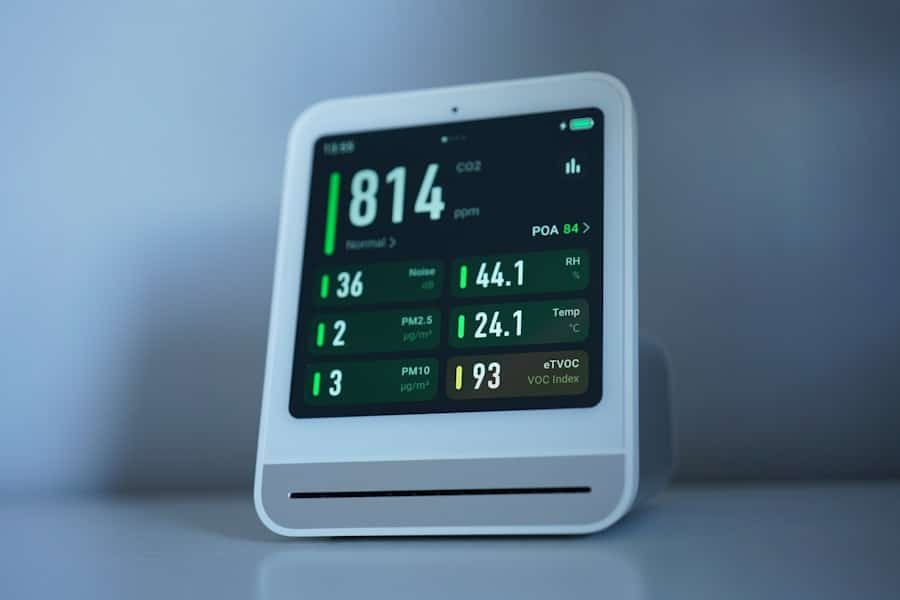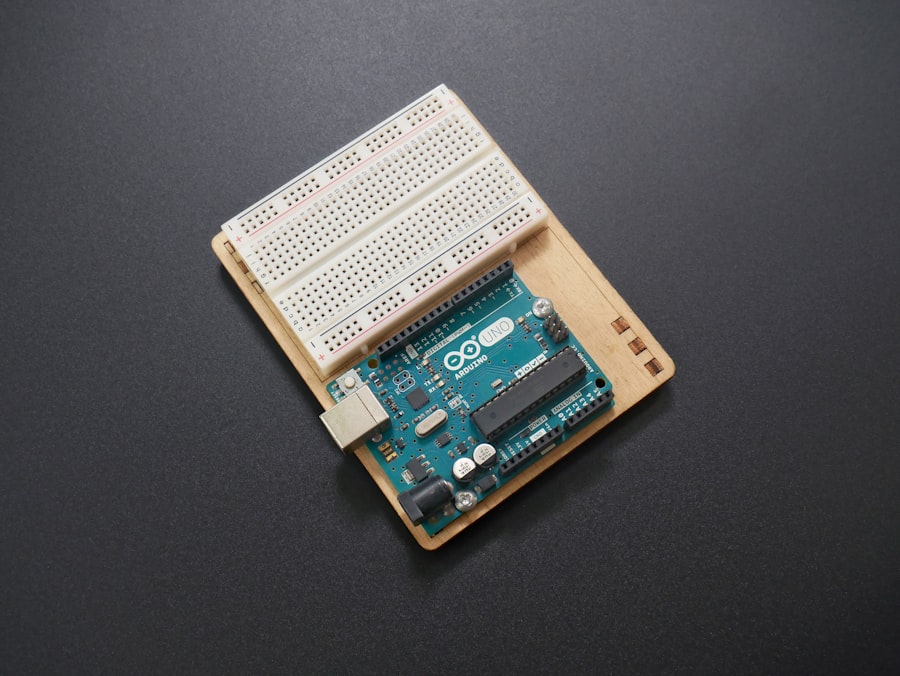Bio-interfaces represent a fascinating intersection of biology and technology, where the intricate workings of living organisms are bridged with electronic systems. These interfaces facilitate communication between biological systems and electronic devices, enabling a myriad of applications ranging from medical diagnostics to advanced prosthetics. The development of bio-interfaces has been propelled by the need for more sophisticated tools that can monitor, interpret, and even manipulate biological signals.
As we delve deeper into the realm of bio-interfaces, it becomes evident that they are not merely tools but rather transformative technologies that hold the potential to revolutionize healthcare and enhance human capabilities. The significance of bio-interfaces is underscored by their ability to decode complex biological signals, particularly neural signals. Neural signals are the electrical impulses generated by neurons as they communicate with one another, forming the basis of all brain functions.
By harnessing these signals through bio-interfaces, researchers and clinicians can gain insights into brain activity, diagnose neurological disorders, and develop innovative treatments. The evolution of bio-interface technologies has opened new avenues for understanding the brain’s intricate networks, leading to advancements in neuroprosthetics, brain-computer interfaces (BCIs), and other applications that bridge the gap between human cognition and machine intelligence.
Key Takeaways
- Bio-interfaces are the connection points between biological systems and external devices, enabling the exchange of information and signals.
- Neural signals are electrical impulses that transmit information within the nervous system, and understanding them is crucial for developing bio-interface technologies.
- Bio-interface technologies include neural implants, brain-computer interfaces, and neural prosthetics, which enable communication between the brain and external devices.
- Applications of bio-interfaces in neural signal processing include restoring lost sensory functions, controlling prosthetic limbs, and treating neurological disorders.
- Challenges and limitations of bio-interfaces include biocompatibility, signal degradation over time, and ethical considerations regarding privacy and consent.
Understanding Neural Signals
Neural signals are the fundamental means by which neurons communicate within the nervous system. These signals are primarily electrical impulses known as action potentials, which occur when a neuron is activated and transmits information to other neurons. The generation of these action potentials is a complex process involving the movement of ions across neuronal membranes, leading to changes in voltage that propagate along the axon.
This electrical activity is not only crucial for basic functions such as reflexes and sensory perception but also underpins higher cognitive processes like memory, decision-making, and emotional regulation. To fully appreciate the role of neural signals in bio-interface technology, it is essential to understand their characteristics and how they can be measured. Neural signals can be recorded using various techniques, including electroencephalography (EEG), which captures electrical activity from the scalp; intracranial recordings, which involve placing electrodes directly on or within the brain; and functional magnetic resonance imaging (fMRI), which measures changes in blood flow associated with neural activity.
Each method has its advantages and limitations, influencing the type of data collected and its applicability in different contexts. For instance, while EEG provides excellent temporal resolution, it lacks spatial precision compared to fMRI. Understanding these nuances is critical for developing effective bio-interfaces that can accurately interpret neural signals.
Bio-Interface Technologies

The landscape of bio-interface technologies is diverse and rapidly evolving, encompassing a range of devices designed to interact with biological systems. At the forefront are neural interfaces, which can be categorized into invasive and non-invasive types. Invasive interfaces involve surgical implantation of electrodes into the brain or nervous system, allowing for high-resolution recordings of neural activity.
These devices have been instrumental in advancing our understanding of brain function and have paved the way for applications such as deep brain stimulation (DBS) for treating conditions like Parkinson’s disease. On the other hand, non-invasive bio-interfaces offer a less risky alternative by utilizing external sensors to capture neural signals without penetrating the skin or skull. Technologies such as EEG caps and wearable devices have gained popularity due to their ease of use and ability to monitor brain activity in real-time.
Recent advancements in materials science have led to the development of flexible and biocompatible electrodes that can conform to the contours of the skin or brain tissue, enhancing signal quality while minimizing discomfort. These innovations are crucial for creating long-term bio-interfaces that can be used in chronic conditions or for continuous monitoring.
Applications of Bio-Interfaces in Neural Signal Processing
The applications of bio-interfaces in neural signal processing are vast and varied, reflecting their potential to transform multiple fields. One prominent application is in the realm of neuroprosthetics, where bio-interfaces enable individuals with motor impairments to control prosthetic limbs using their thoughts. By decoding neural signals associated with intended movements, these systems can translate brain activity into commands that drive robotic limbs, restoring a degree of autonomy to users.
Research has demonstrated that individuals can learn to control these devices with remarkable precision, showcasing the profound impact of bio-interfaces on enhancing quality of life. Another significant application lies in brain-computer interfaces (BCIs), which allow direct communication between the brain and external devices. BCIs have shown promise in assisting individuals with severe disabilities to interact with computers or control assistive technologies through thought alone.
For instance, individuals with amyotrophic lateral sclerosis (ALS) have utilized BCIs to communicate by selecting letters on a screen using their neural signals. This technology not only empowers users but also opens new avenues for research into cognitive processes and brain function.
Challenges and Limitations of Bio-Interfaces
Despite their potential, bio-interfaces face several challenges and limitations that must be addressed for widespread adoption and effectiveness. One major challenge is signal noise and interference, which can obscure the clarity of neural signals. Biological tissues generate electrical noise that can complicate signal interpretation, necessitating advanced filtering techniques and algorithms to enhance signal quality.
Additionally, the variability in individual anatomy and physiology can lead to inconsistencies in signal acquisition, making it difficult to develop standardized protocols for different users. Another significant limitation is the biocompatibility and longevity of invasive bio-interfaces. While these devices can provide high-resolution data, their long-term implantation poses risks such as inflammation, tissue damage, or electrode degradation over time.
Researchers are actively exploring new materials and designs that promote better integration with biological tissues while minimizing adverse effects. Furthermore, ethical considerations surrounding invasive procedures must be carefully navigated to ensure patient safety and informed consent.
Future Directions in Bio-Interface Research

The future of bio-interface research is poised for exciting developments as technology continues to advance at an unprecedented pace. One promising direction involves the integration of artificial intelligence (AI) and machine learning algorithms into bio-interface systems. By leveraging AI’s capabilities to analyze complex neural data patterns, researchers can enhance the accuracy of signal interpretation and improve user experience in applications such as BCIs and neuroprosthetics.
This synergy between AI and bio-interfaces could lead to more intuitive control mechanisms that adapt to individual users’ needs over time. Moreover, advancements in nanotechnology may pave the way for more sophisticated bio-interface designs. Nanoscale materials can be engineered to create highly sensitive sensors capable of detecting minute changes in neural activity with minimal invasiveness.
These innovations could lead to wearable devices that provide continuous monitoring of brain health or real-time feedback for cognitive training programs. As research progresses, interdisciplinary collaboration among neuroscientists, engineers, and ethicists will be essential to navigate the complexities of developing safe and effective bio-interface technologies.
Ethical Considerations in Neural Signal Processing
As bio-interfaces become increasingly integrated into healthcare and daily life, ethical considerations surrounding their use must be addressed comprehensively.
The potential for misuse or exploitation of neural data raises questions about consent and ownership rights over one’s own biological information.
Additionally, there are ethical implications related to equity and access to bio-interface technologies. As these innovations hold promise for enhancing human capabilities, disparities in access could exacerbate existing inequalities in healthcare and technology adoption. Ensuring that advancements benefit all segments of society requires thoughtful policy-making and inclusive design practices that prioritize accessibility.
The Impact of Bio-Interfaces on Neural Signal Processing
The impact of bio-interfaces on neural signal processing is profound and multifaceted, shaping not only our understanding of the brain but also our approach to healthcare and human enhancement. As we continue to explore this dynamic field, it is crucial to balance innovation with ethical considerations, ensuring that advancements serve humanity’s best interests while respecting individual rights and dignity. The journey ahead promises exciting possibilities as we unlock new frontiers in neuroscience through the lens of bio-interface technology.
In the rapidly evolving field of bio-interfaces, the integration of neural signals with devices is paving the way for groundbreaking advancements in medical technology. These interfaces are crucial for developing prosthetics and other assistive devices that can seamlessly interact with the human nervous system. A related article that delves into the technological advancements in health management is com/what-is-the-best-android-health-management-watches/’>this piece on the best Android health management watches.
It explores how wearable technology is becoming increasingly sophisticated, offering insights into how these devices can monitor and improve health, much like how bio-interfaces aim to enhance human-device interaction.
FAQs
What are bio-interfaces?
Bio-interfaces are interfaces that connect biological systems, such as neural signals, with artificial devices or systems. They can be used to bridge the gap between biological and artificial systems, allowing for communication and interaction between the two.
How do bio-interfaces bridge neural signals and devices?
Bio-interfaces can bridge neural signals and devices by translating neural signals into a format that can be understood and processed by artificial devices, and vice versa. This allows for the integration of neural signals with devices such as prosthetics, brain-computer interfaces, and neural implants.
What are the potential applications of bio-interfaces in bridging neural signals and devices?
Bio-interfaces have the potential to revolutionize fields such as medicine, neuroscience, and technology. They can be used to develop advanced prosthetics that can be controlled directly by neural signals, create brain-computer interfaces for communication and control, and develop neural implants for treating neurological disorders.
What are some challenges in developing bio-interfaces for bridging neural signals and devices?
Challenges in developing bio-interfaces include ensuring biocompatibility, long-term stability, and reliability of the interface, as well as minimizing tissue damage and immune response. Additionally, there are challenges in accurately interpreting and processing neural signals, and in developing interfaces that can effectively communicate with and control artificial devices.
What are some current research and developments in the field of bio-interfaces for bridging neural signals and devices?
Current research in bio-interfaces includes the development of advanced neural implants, brain-computer interfaces, and prosthetics that can be controlled by neural signals. There is also ongoing research into improving the biocompatibility and stability of bio-interfaces, as well as developing new methods for interpreting and processing neural signals.

